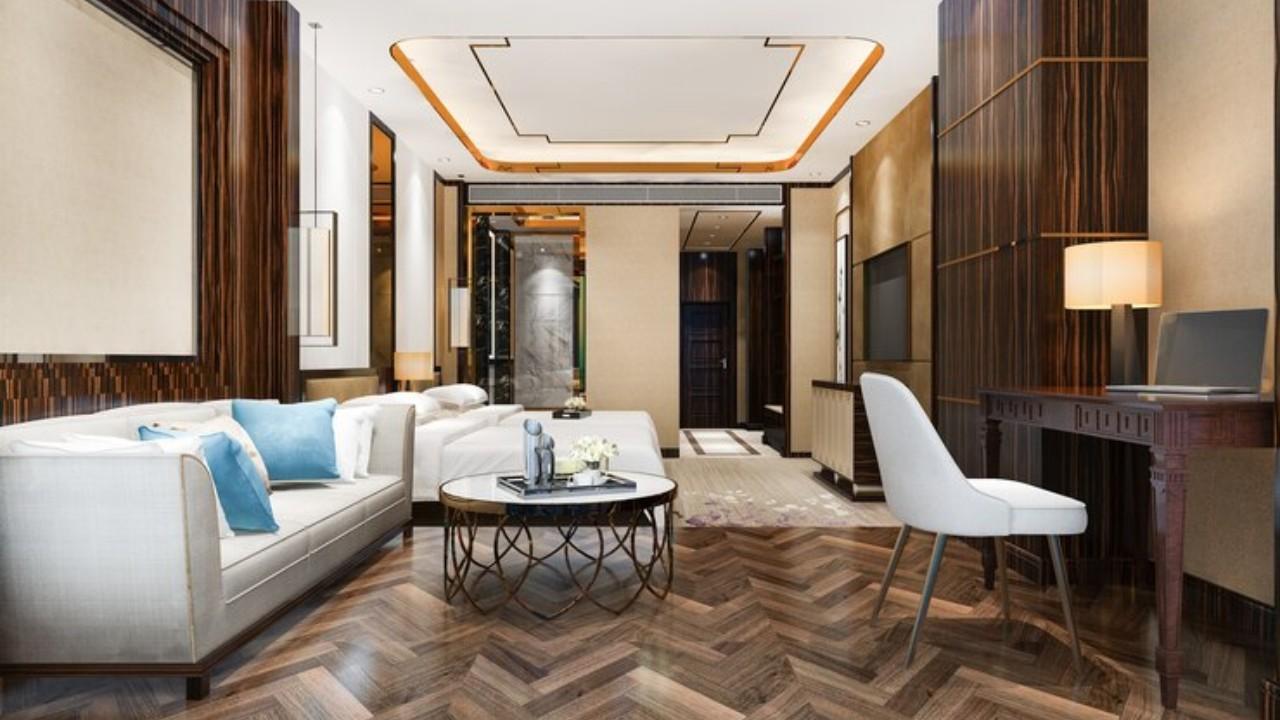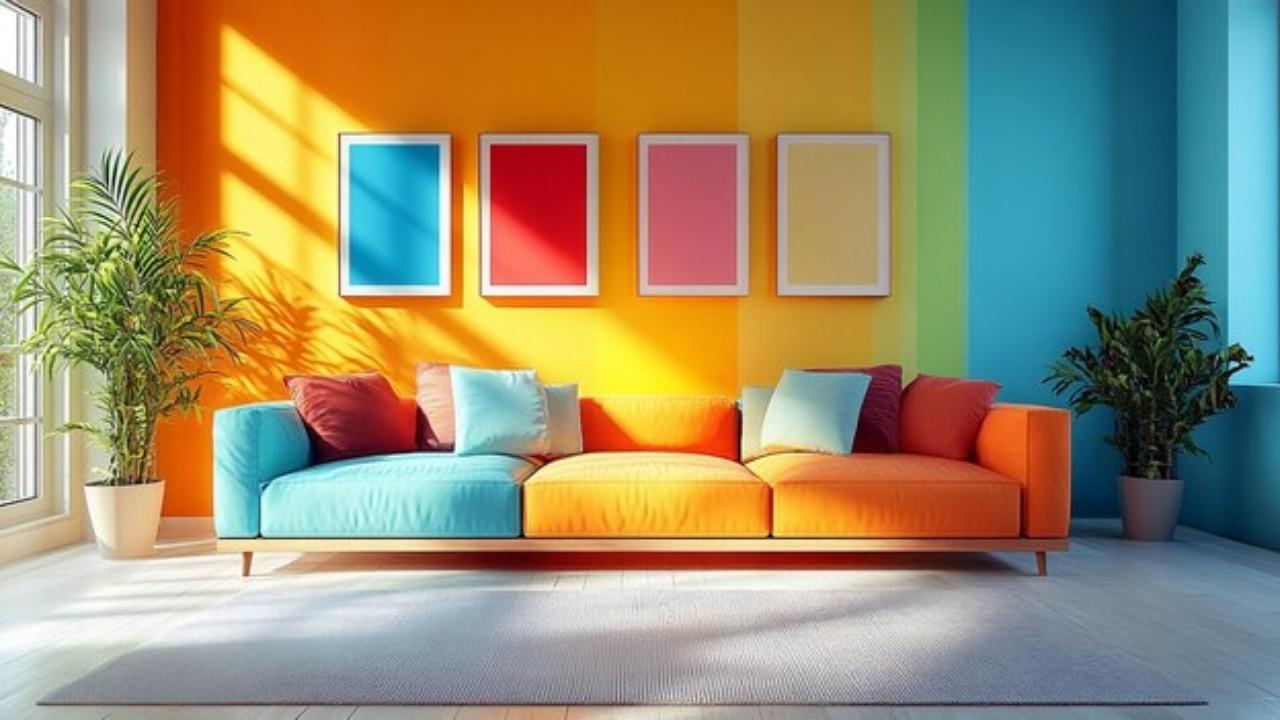Let the Sun In: Expert Tips for Maximizing Natural Light in Your Home
.jpg)
When we consider designing a beautiful and at-ease home, we regularly focus on furniture, colors, and format. But one component is equally important: natural light.
Whether or not you are renovating a room or constructing a new home, natural light in a house performs a powerful role in how space appears and feels or even influences your well-being.
This blog discusses the importance of natural light, its benefits, and how to maximize it in your home.
What is natural light in interior design?
The term "natural light" refers to sunlight. In interior design , it refers to the sunlight that enters your home through windows, skylights, glass doors, or open spaces.
Interior Designers use natural light to:
- Brighten rooms.
- Make spaces seem large.
- Highlight textures and materials.
- Reduce the use of artificial illumination during the day.
It is one of the most cherished factors in modern houses because it adds warmth, intensity, and natural splendor or beauty to your interiors
.jpg)
.jpg)
.jpg)
Why Is Natural Light Important in a House?
Let us break it down into simple reasons why natural light in a home is crucial:
Boosts Mood & Mental Health
Sunlight triggers the discharge of serotonin, a hormone that boosts mood and allows you to feel calm and focused. Homes with more sunlight hours can help reduce pressure, anxiety, and even seasonal depression.
Saves Energy & Money
With extra sunlight hours, you don’t want to switch on lights at some point of the day, reducing electricity use and bills. It is a green answer too!
.jpg)
.jpg)
.jpg)
Makes Rooms Look Bigger & Brighter
Natural light reflects off surfaces, giving your room an open, large air. It may make small rooms seem larger and more inviting.
Enhances Interior Layout
Natural light brings out the actual shades and textures in your home. Wood floors, textured partitions, or decor pieces appear more beautiful in daylight.
Supports Better Sleep
Exposure to natural light all through the day helps keep your bodys internal clock (circadian rhythm), leading to better sleep at nighttime.
What are the Benefits of Natural Sunlight?
Lets go deeper into the benefits of natural sunshine in your home:
- Improves Focus and Productiveness - Great for work-from-home spaces and kids study areas.
- Promotes Vitamin D Production - Only a few minutes of daylight can assist your body in making vitamin D, which is important for bones and immunity.
- Reduces Mold and Dampness - Sunlight keeps spaces dry and fresh.
- Increases Property Price - Homes with lots of natural light are more appealing to customers.
.jpg)
.jpg)
.jpg)
How can you use sunlight effectively in Interior Design?
The usage of sunlight effectively in interior design is all about maximizing natural light to decorate the beauty, capability, and temper of your space. Right here are some easy, smart, and best ways to make sunlight work for your interiors:
1. Use Big Home Windows & Glass Doorways
Install floor-to-ceiling windows, sliding glass doorways, or French doors to permit the most sunlight to enter your rooms. Going South-going through home windows is specifically superb for year-round light.
2. Upload Mirrors to Reflect Light
Place mirrors opposite windows or in corners to dance sunlight around the room. This makes the distance appearance brighter and bigger without the usage of any more strength.
3. Choose Light Colorings for Walls & Furnishings
Use white, beige, light gray, or pastels on your walls, ceilings, and fixtures. Those colors reflect daylight more than dark sunshades, supporting the room experience as ethereal and clean.
4. Use Sheer Curtains or Blinds
Avoid heavy drapes during the day. As an alternative, move for sheer curtains or mild-filtering blinds. They allow sunshine to enter while maintaining privacy.
5. Add Indoor Plants
Sunlight helps houseplants thrive. Position plants like peace lilies, snake plants, or succulents near windows. They will now not only best purify the air but also bring lifestyle and freshness to your interiors.
6. Open Floor Plans Help Spread Light
Open layouts or fewer walls between rooms allow sunlight to travel deeper into your space. If you cannot get rid of partitions, use glass walls or open shelving to percentage the light.
.jpg)
.jpg)
.jpg)
7. Glossy and Reflective Surfaces
Use smooth tiles, lacquered cabinets, steel decor, or polished flooring to mirror sunlight and make rooms sparkle evidently.
8.Set up Skylights or Roof Windows
In case you don t have many side-facing home windows, consider adding skylights. They create vertical blinds, best for lavatories, hallways, or attic rooms.
9. Keep Windows Clean
It may sound obvious, but clean windows allow for more natural light. A layer of dirt or dust can block out a stunning quantity of natural light.
10. Mind the Furniture Layout
Avoid putting large furnishings directly in front of windows. Keep window regions unblocked so Mild can tour throughout the room freely.
What is the optimum direction for natural lighting in a home?
The best direction for natural light in a house depends upon what type of light you want and the way you operate each area. Right here is a simple breakdown that will help you understand:
South-Facing (Best All-Day Light)
Why it s Great: It gets consistent sunlight all day, especially all through winter weather when the sun remains lower.
Best for: Living rooms, family areas, domestic offices, or any room where you need heat and relaxed daytime most of the day.
Tip: Use window coverings to control heat during summertime.
East-Facing (Gentle Morning Light)
Why it s Great: It offers vibrant, soft light in the morning and remains cool during the afternoon.
Best for: Bedrooms and breakfast nooks, you will wake up with the sun and avoid harsh afternoon glare.
Tip: Awesome for early risers or folks that like a relaxed morning vibe.
West-Facing (Strong Afternoon Light)
Why it is outstanding: It gets warm, with severe sunlight inside during the late afternoon and nighttime.
Best for: Dining rooms, lounges, or areas where you relax after painting.
Tip: Be careful, for it may get warm in summer, so you might need blinds or sheer curtains.
North-Facing (Soft, Even Light)
Why it is outstanding: It provides constant, indirect light all day with minimal shadows.
Best for: Studios, domestic places of work, or rooms with paintings wherein even lighting fixtures are preferred.
Tip: Even though cooler and less brilliant, this light is high-quality for lowering glare on monitors.
.jpg)
.jpg)
Conclusion While designing or choosing a home, consider how you use every room and what sort of natural light suits your quality of life together with your everyday habits. Pair this with considerate window placement, and you are on your way to a bright, balanced domestic life. Want help with lights and design thoughts for your home? The specialists at LEAD are right here that will help you make the most of each ray of light!
 logo.png)

